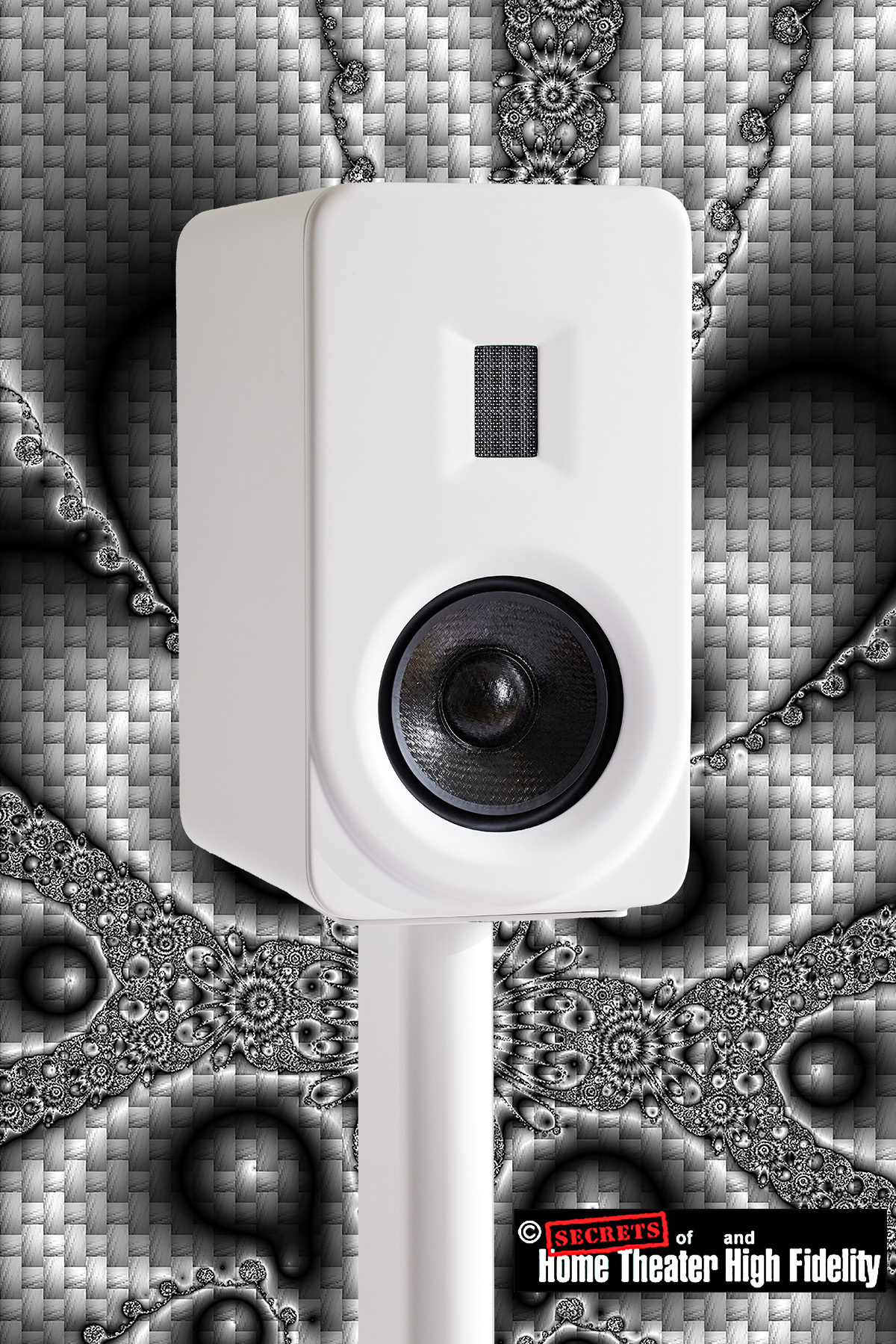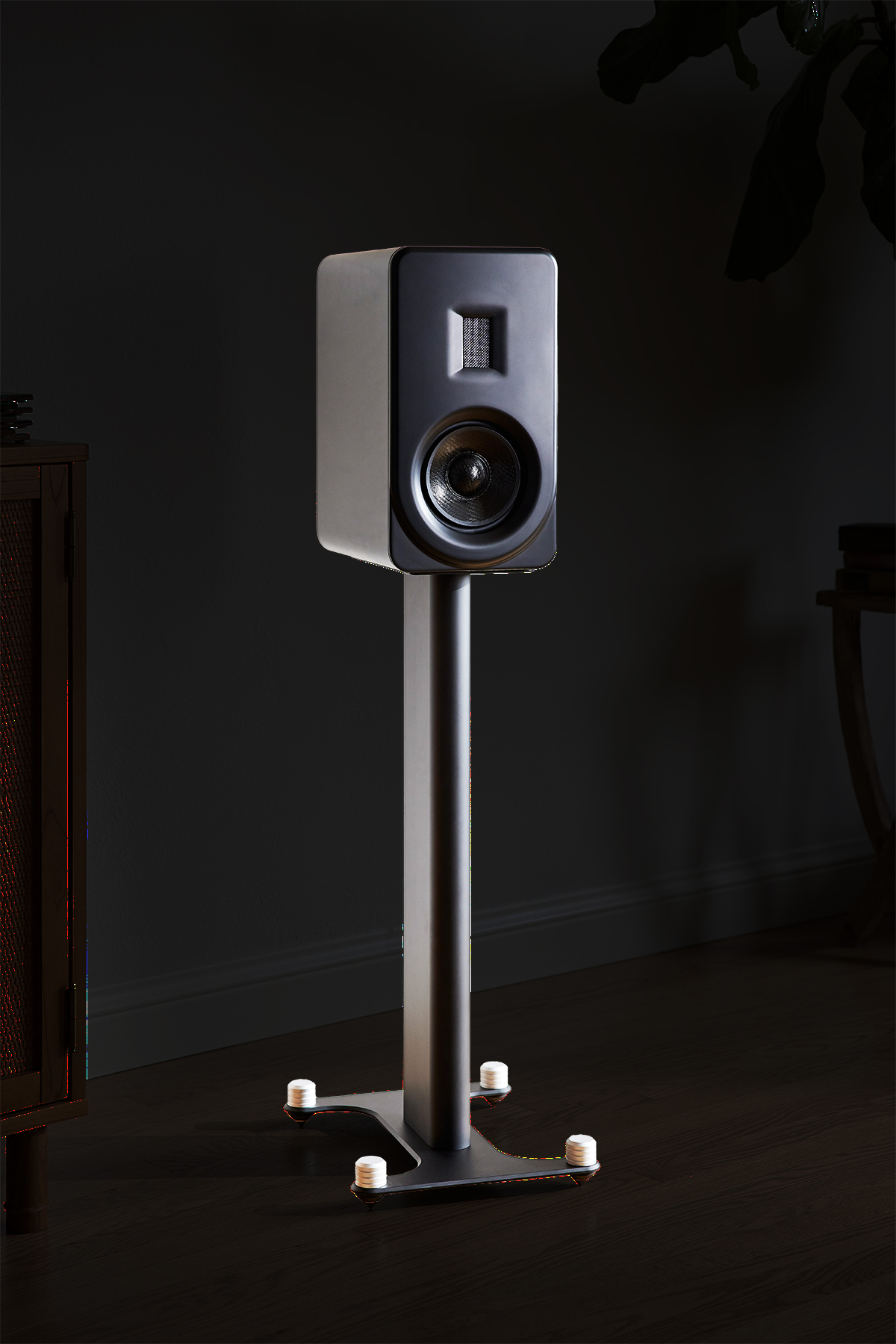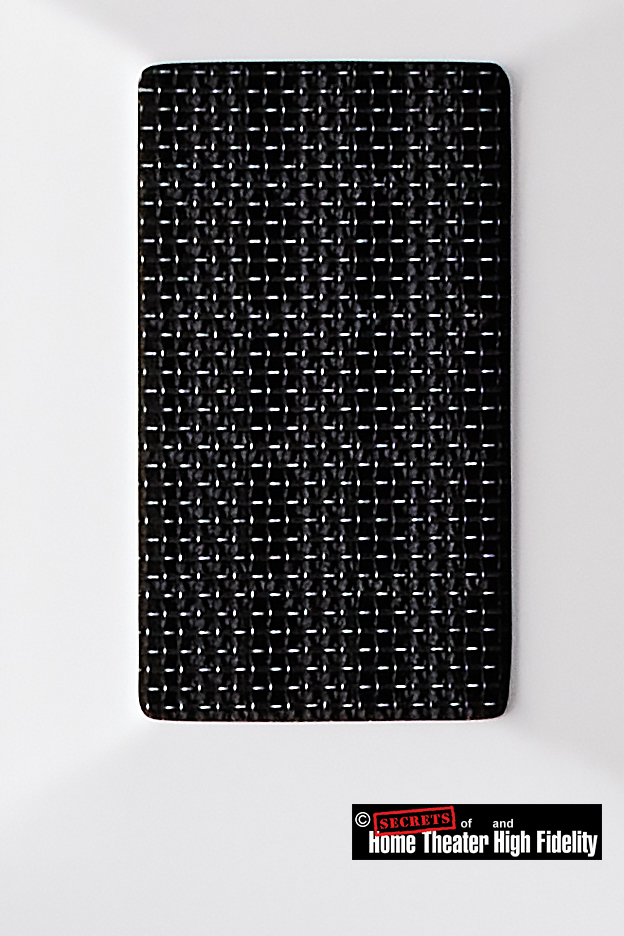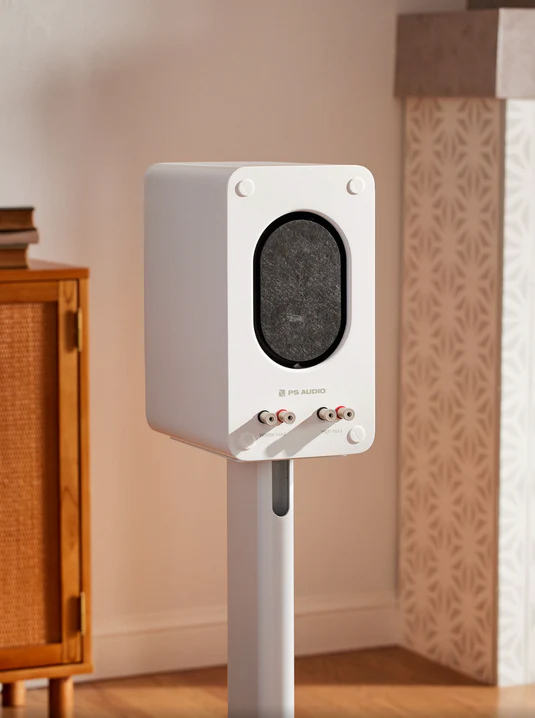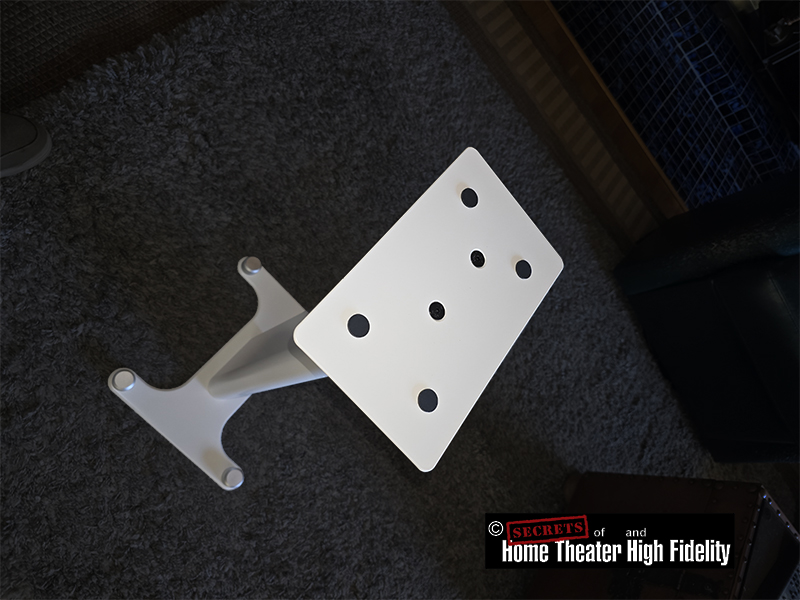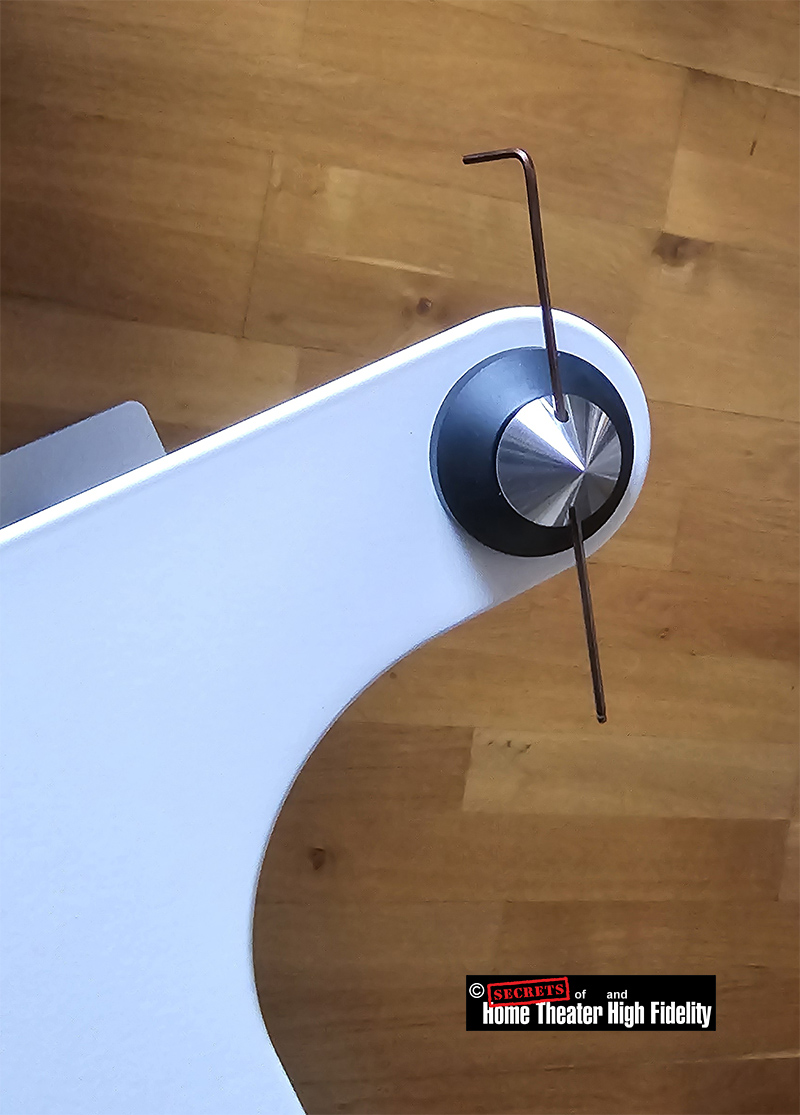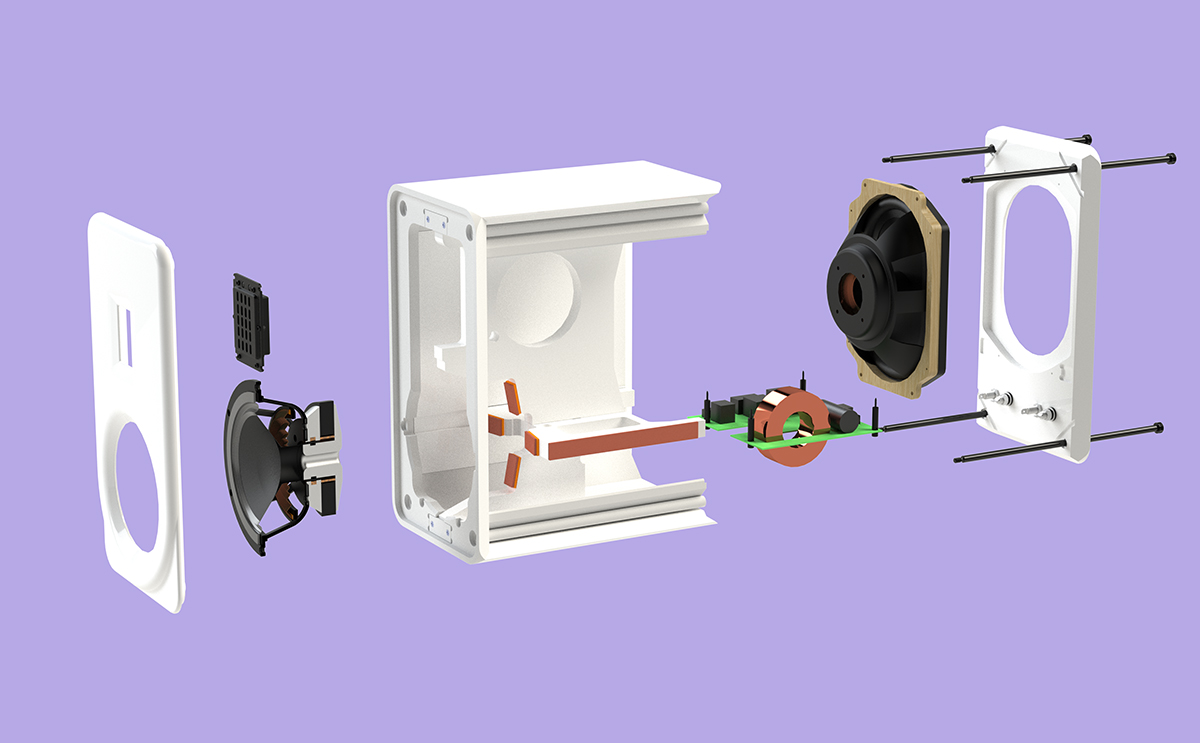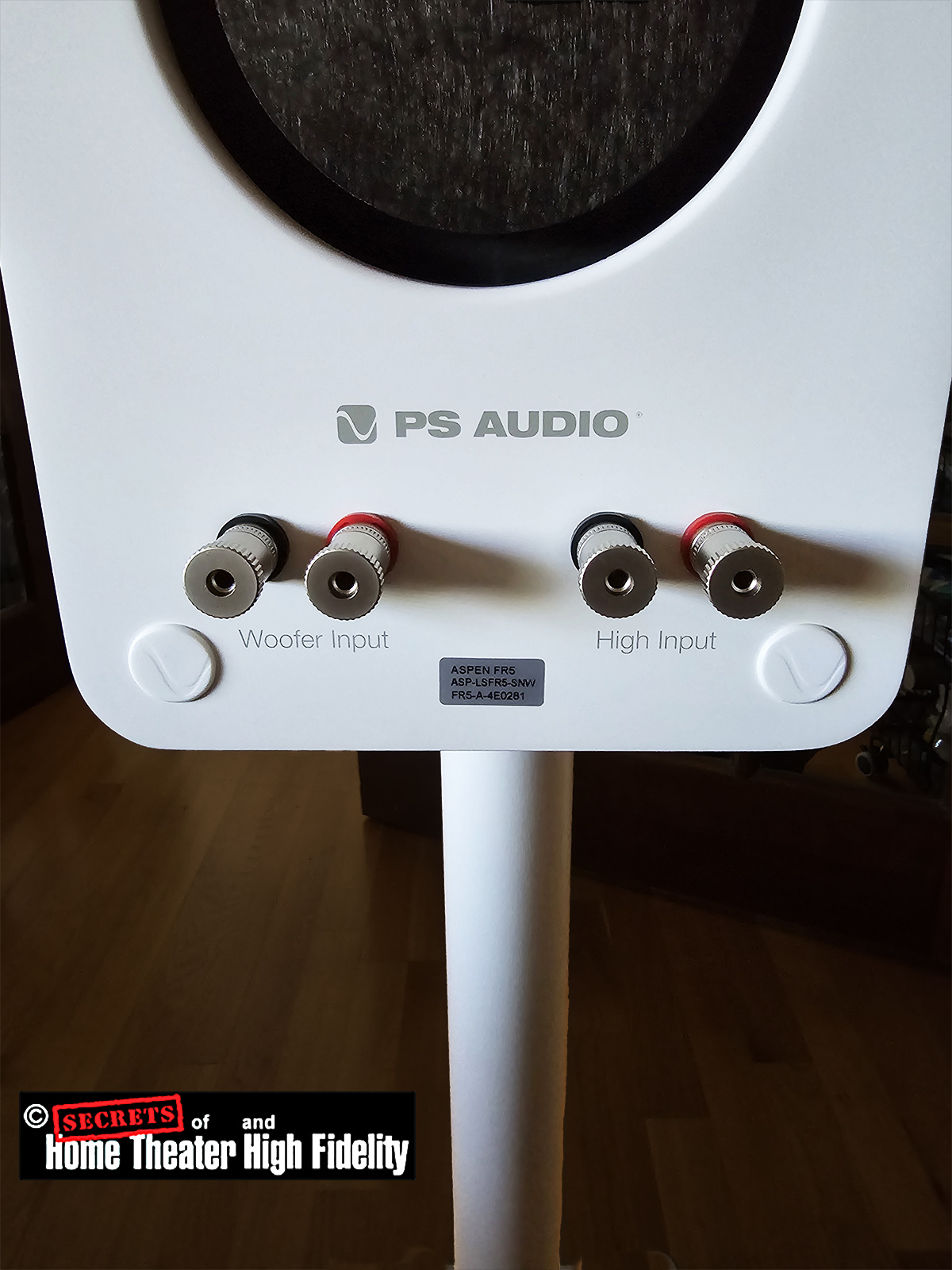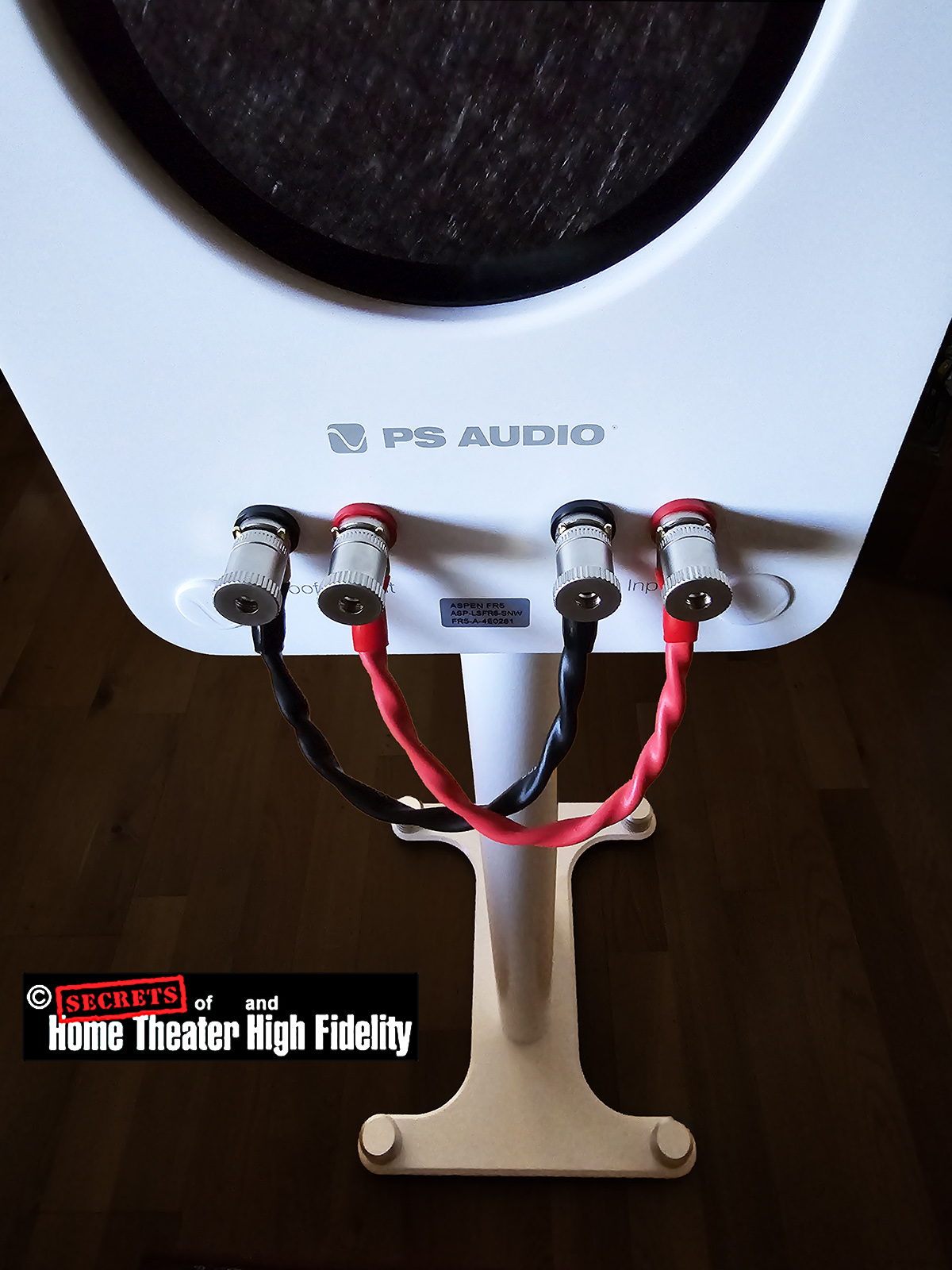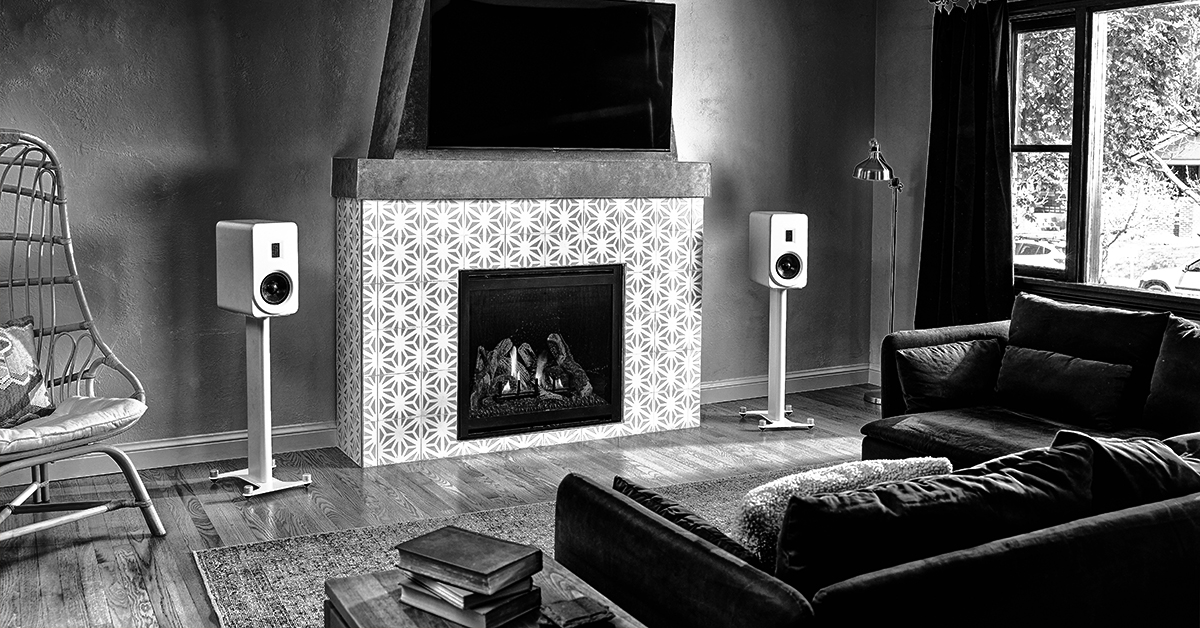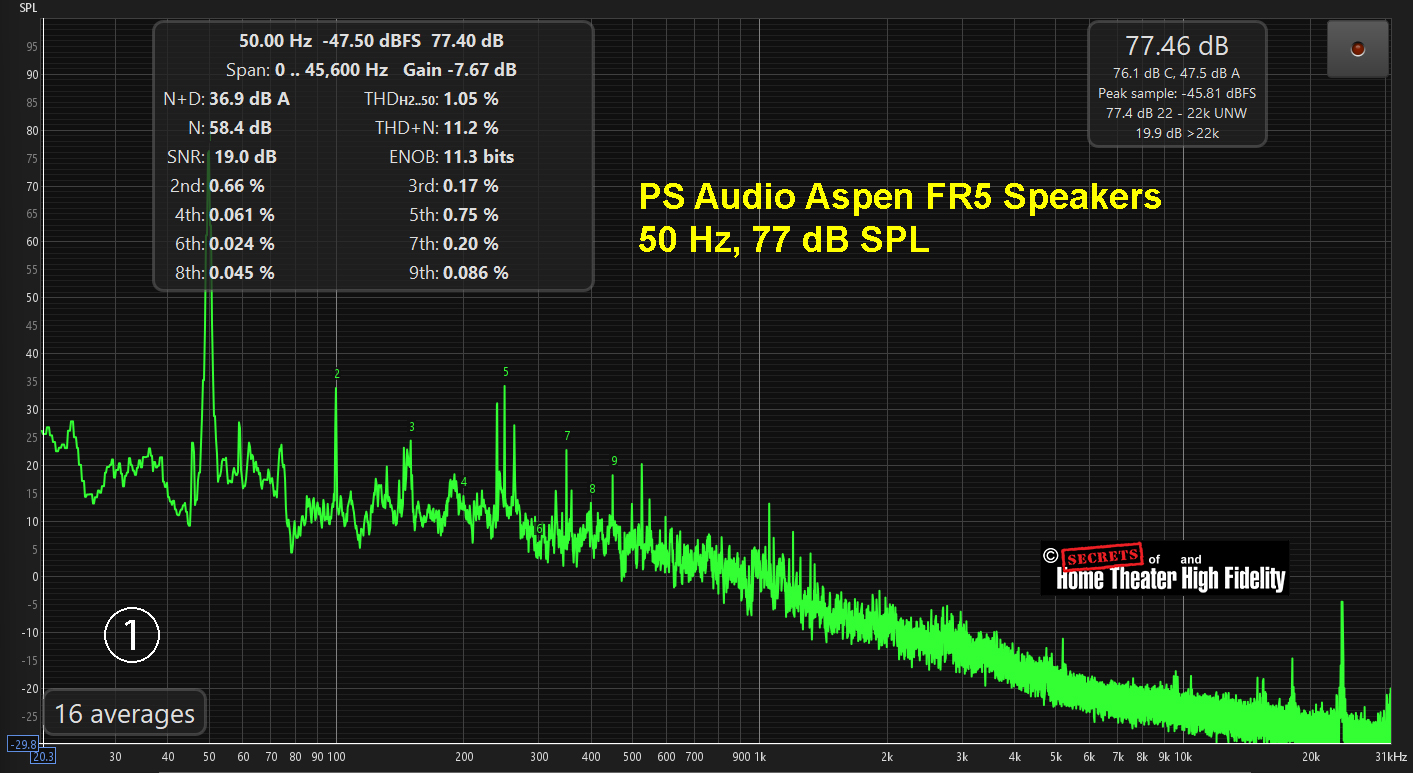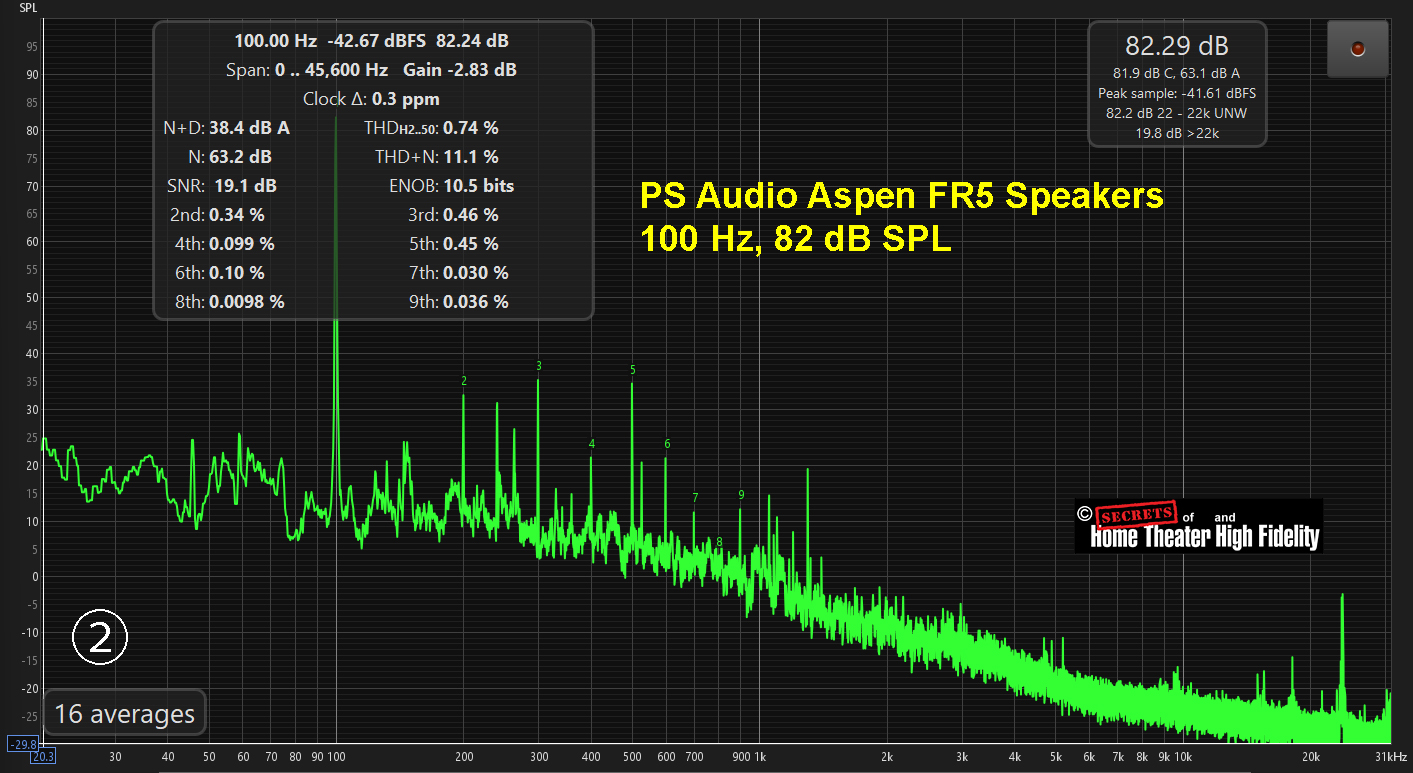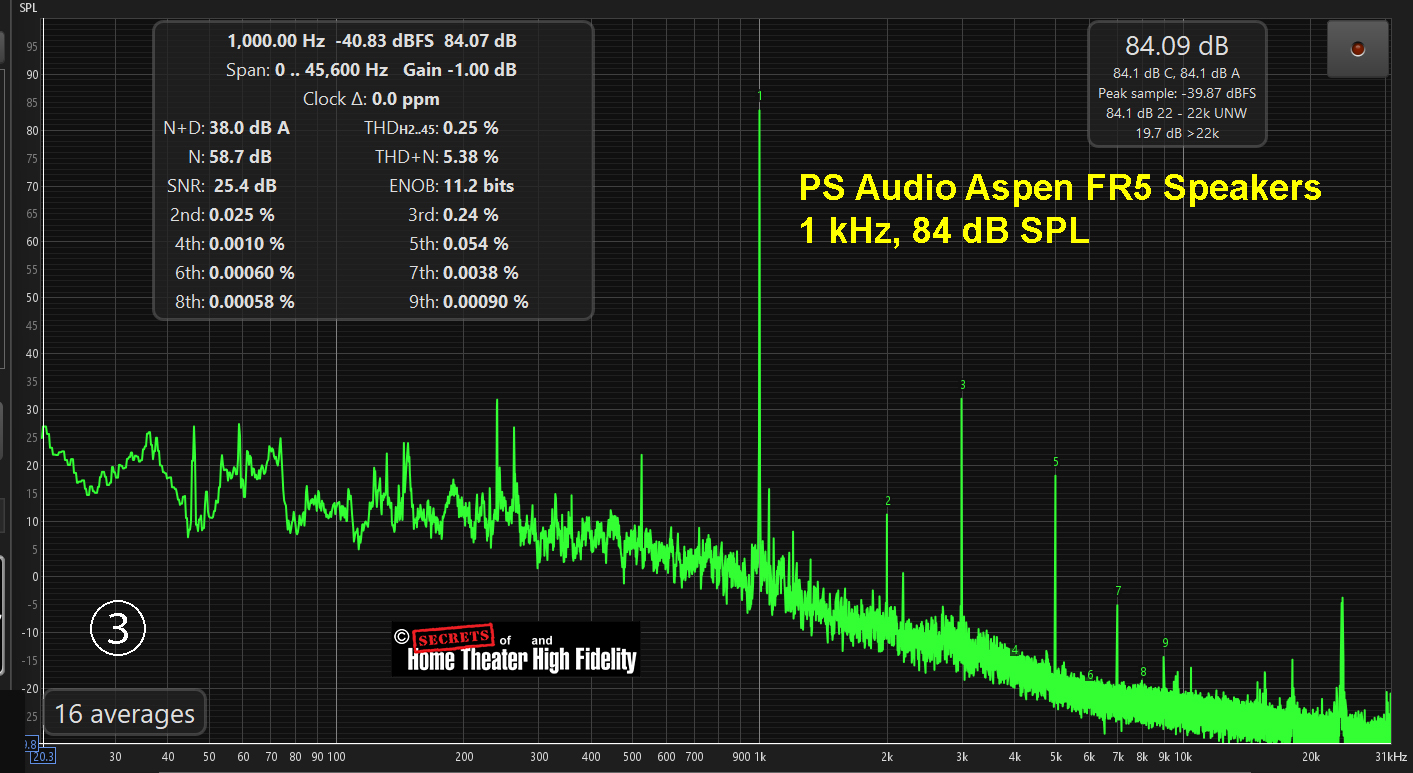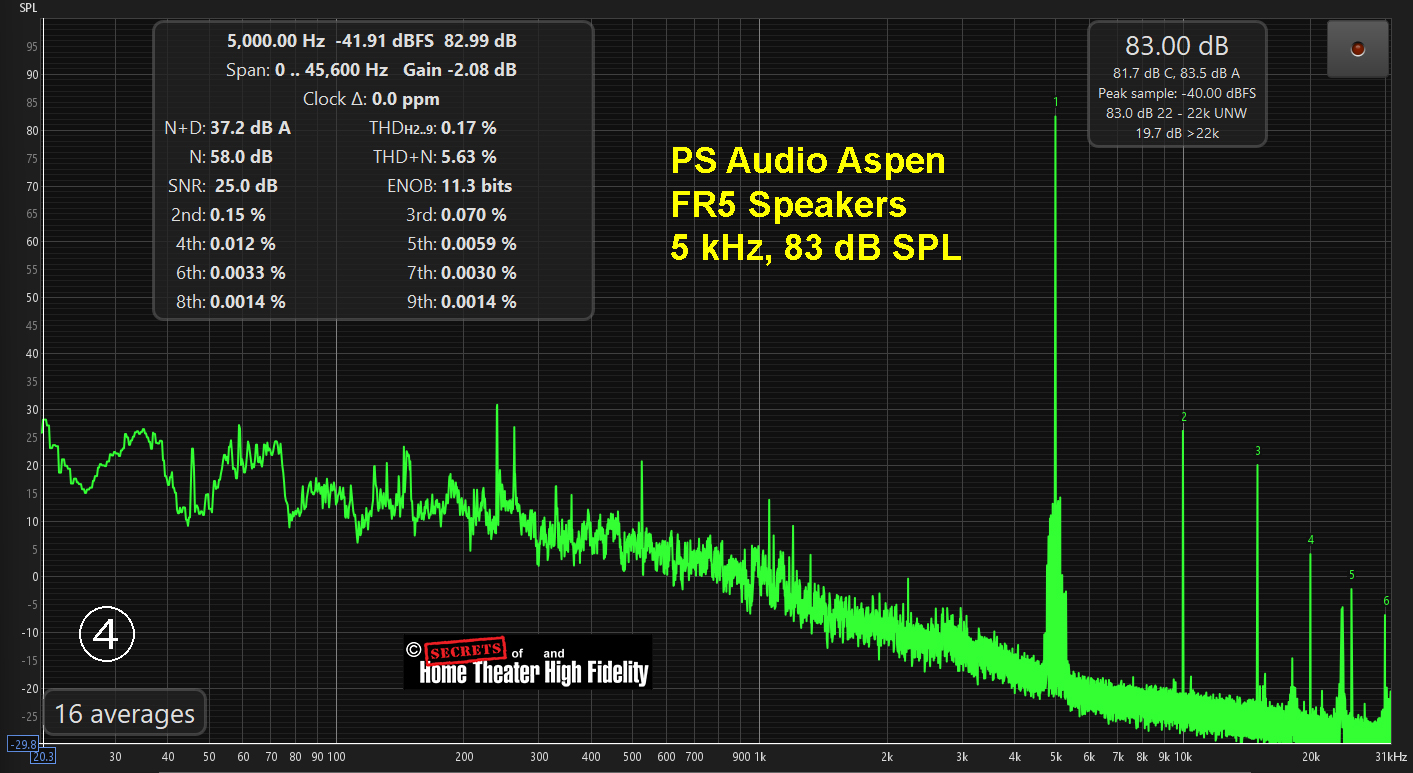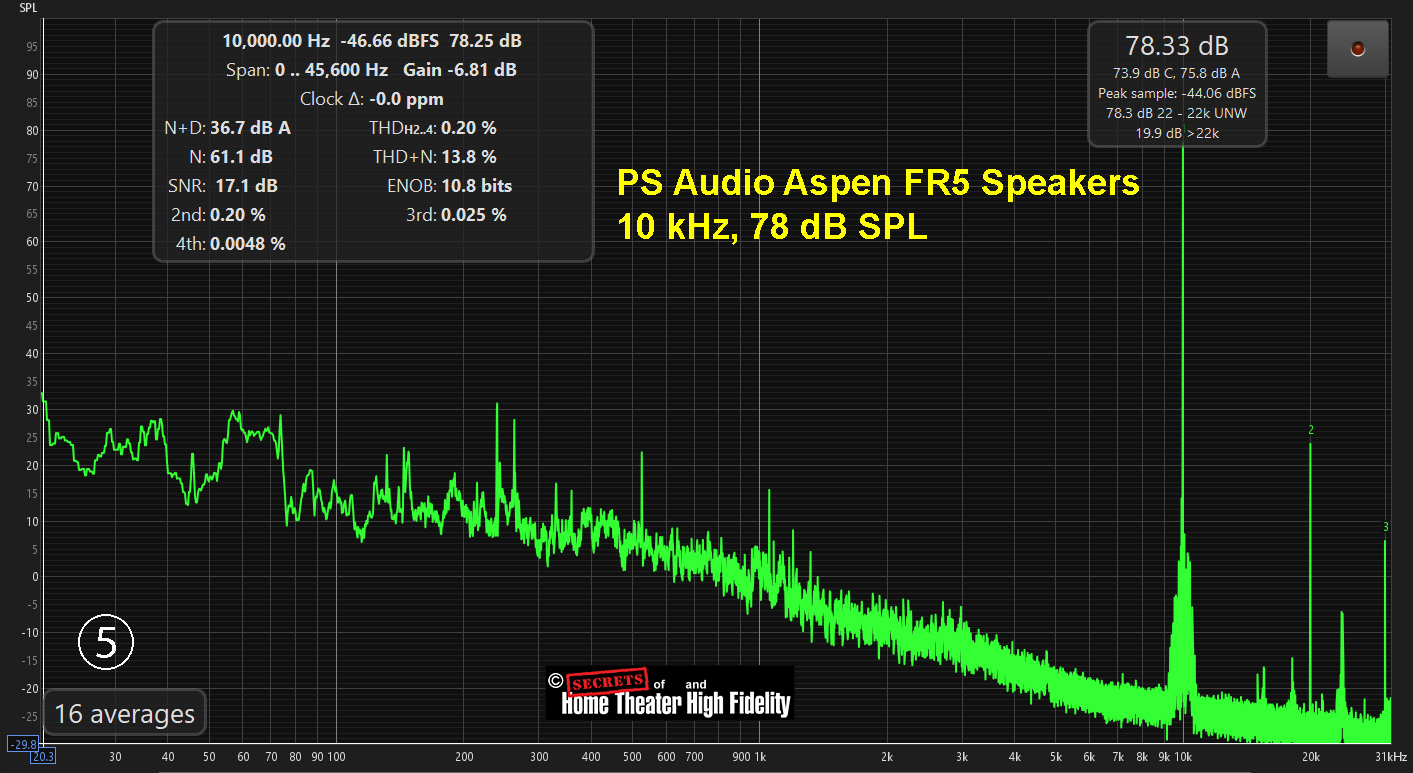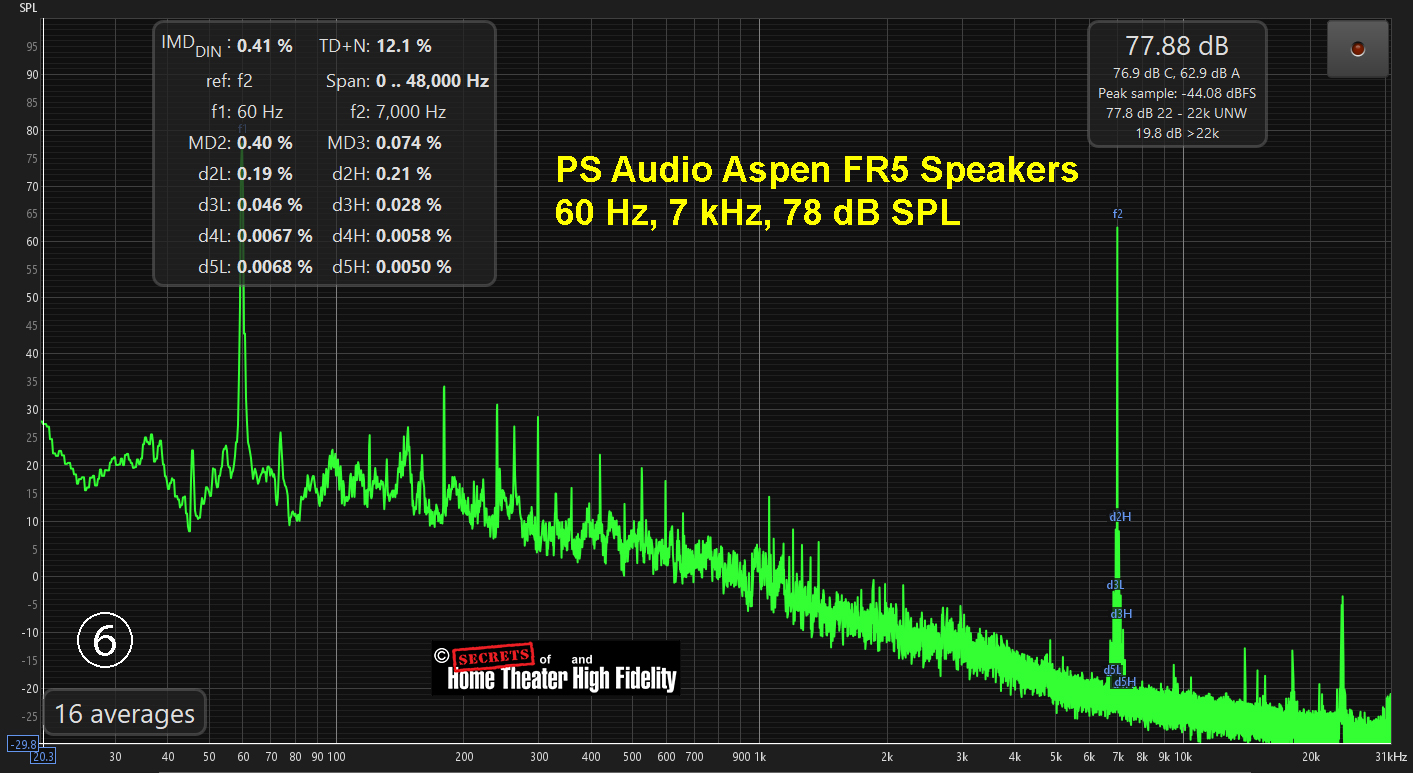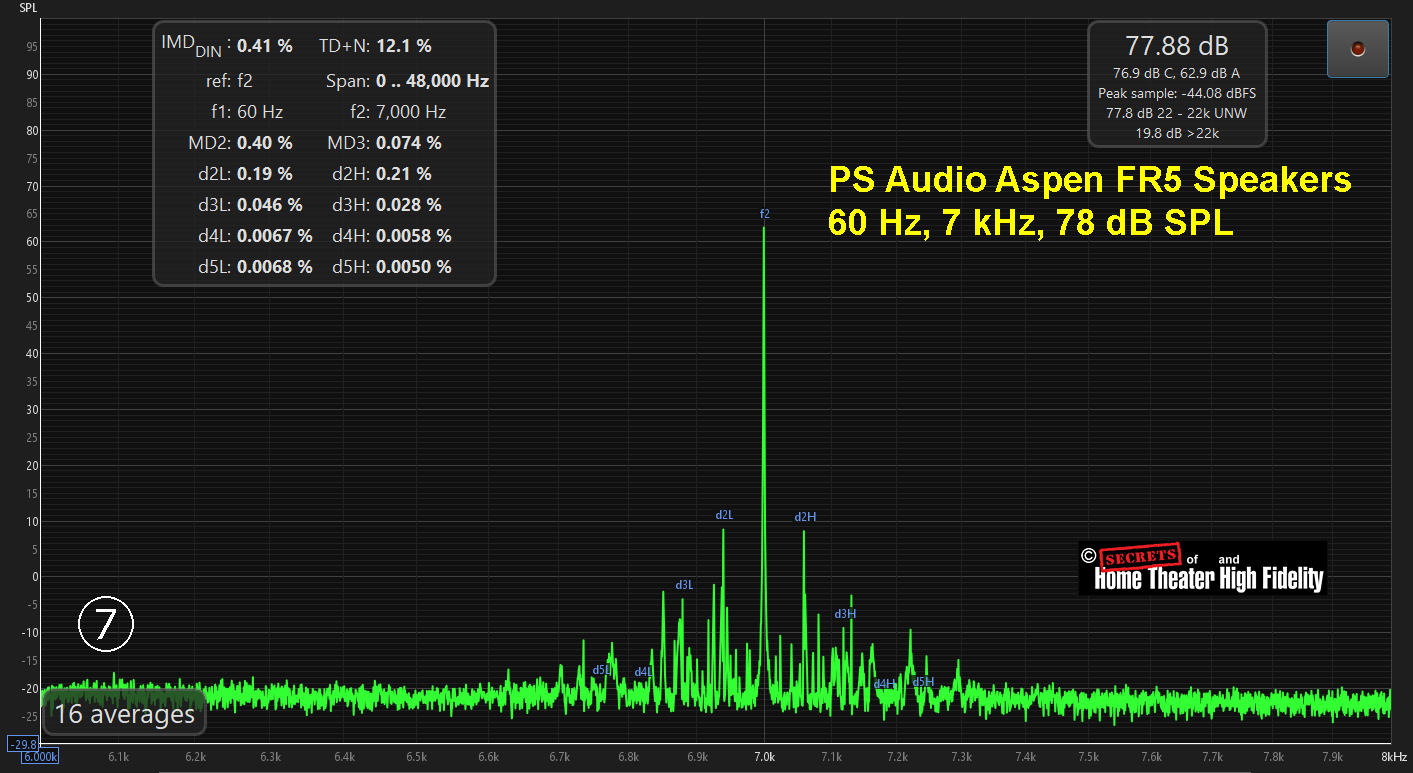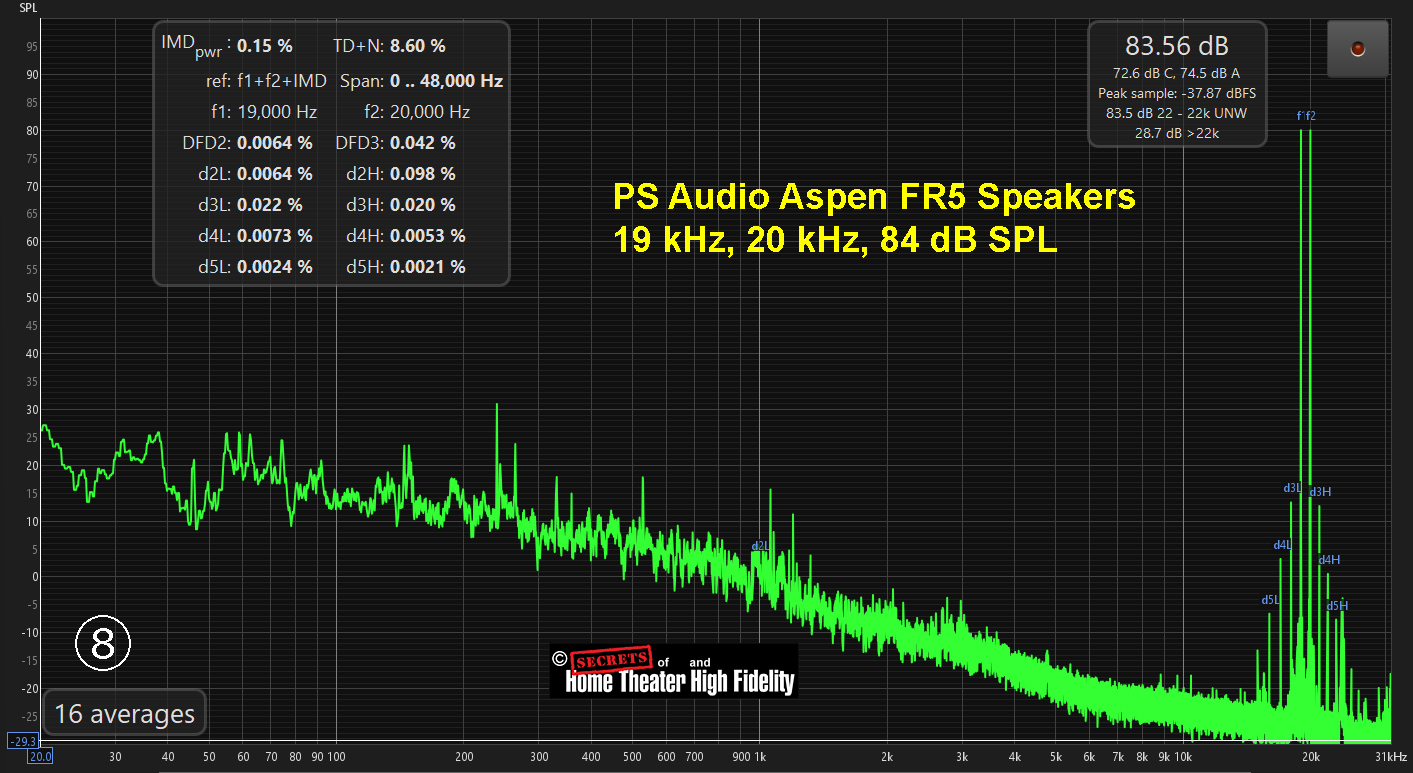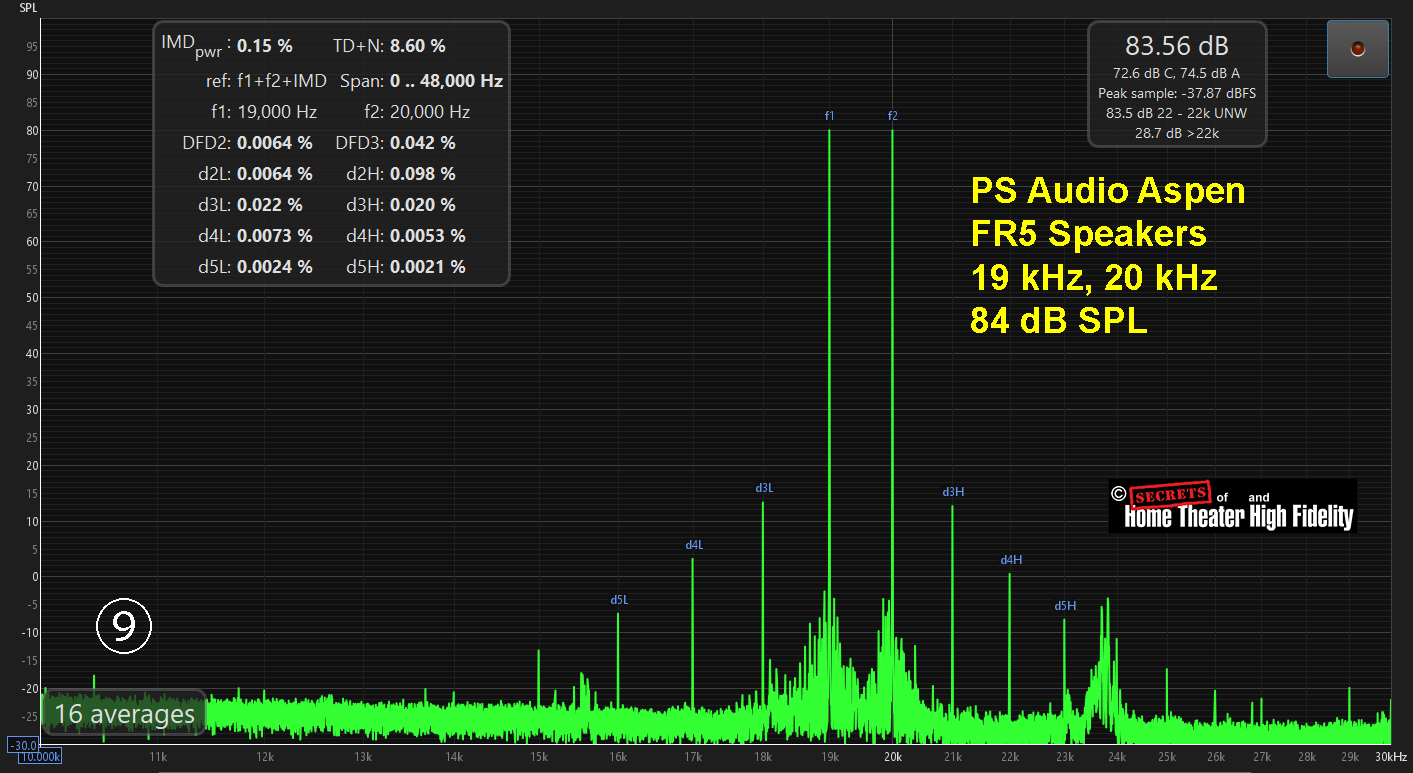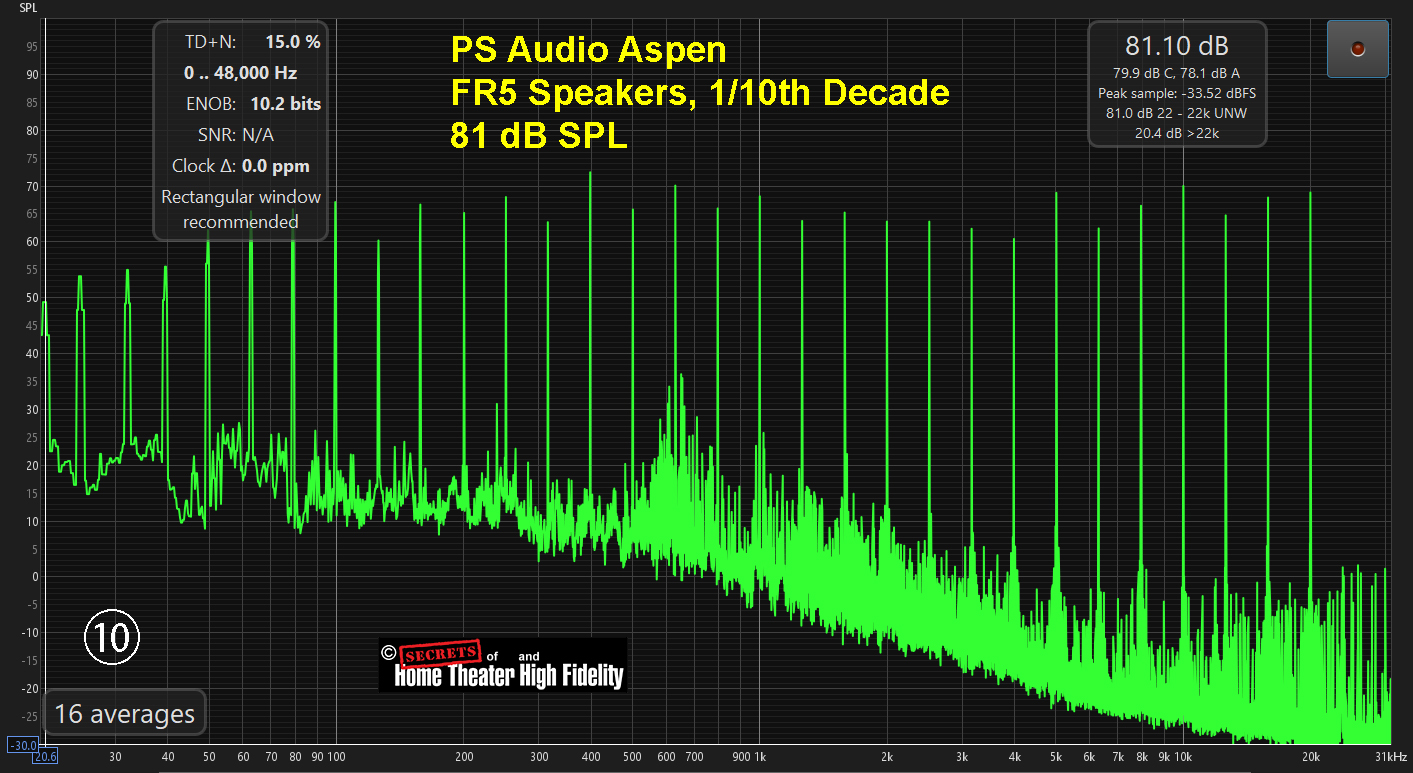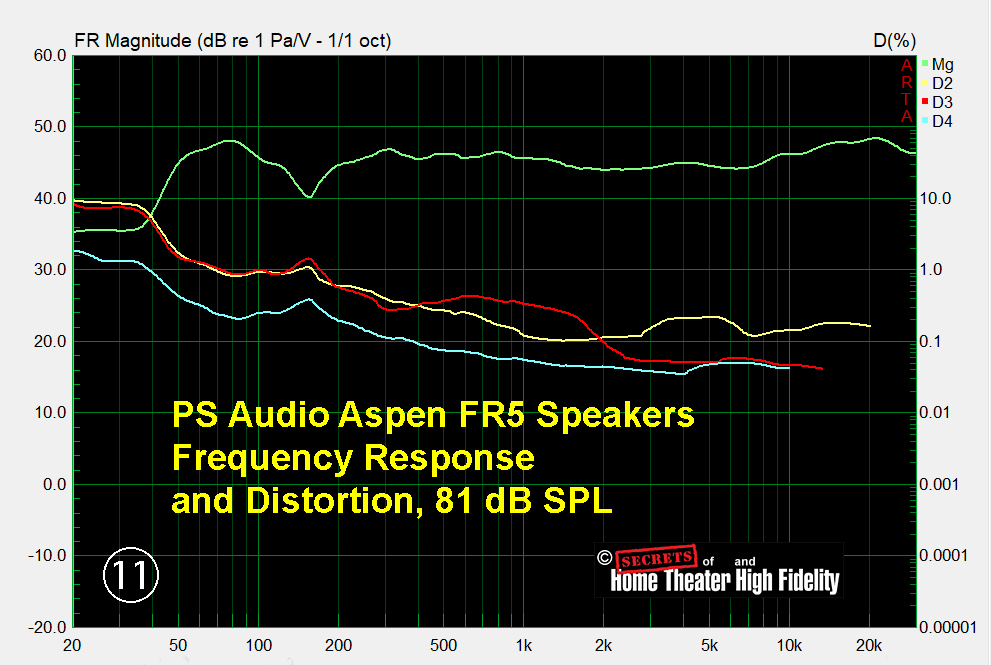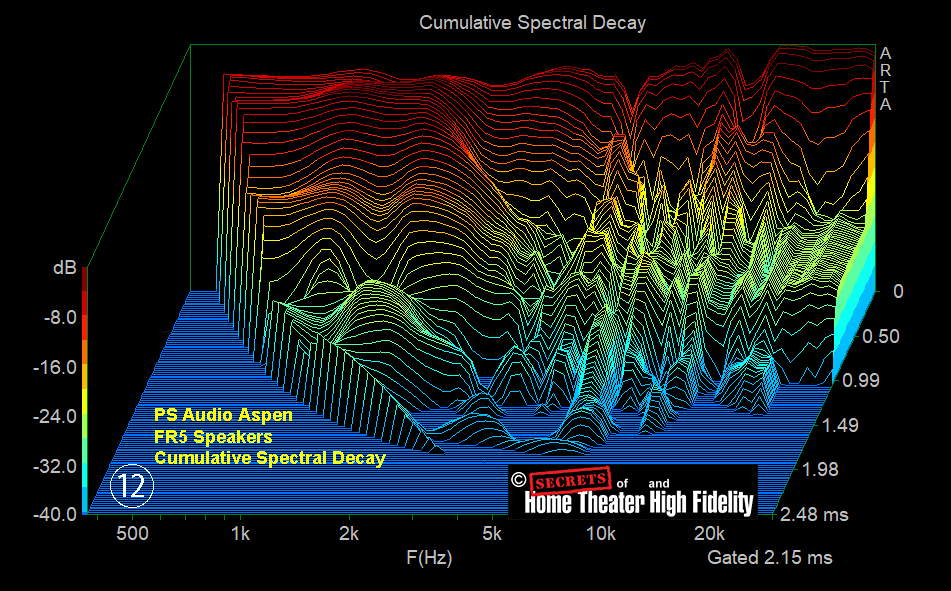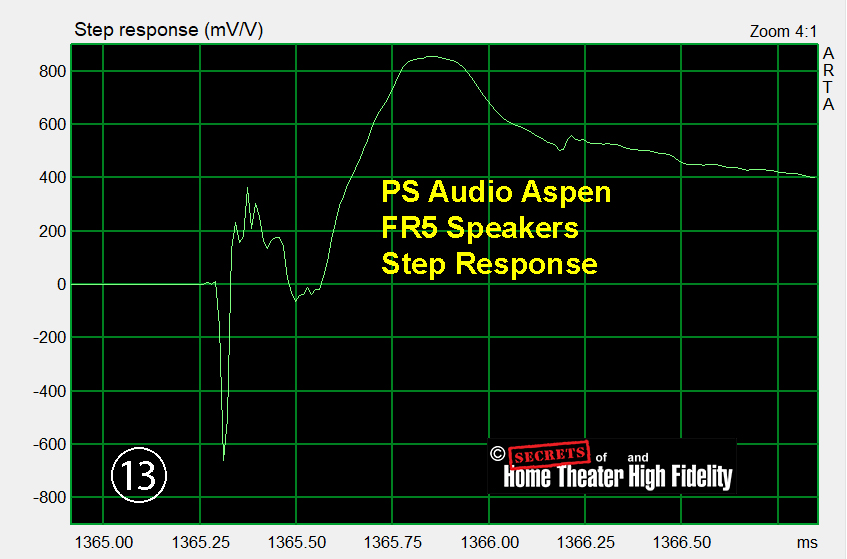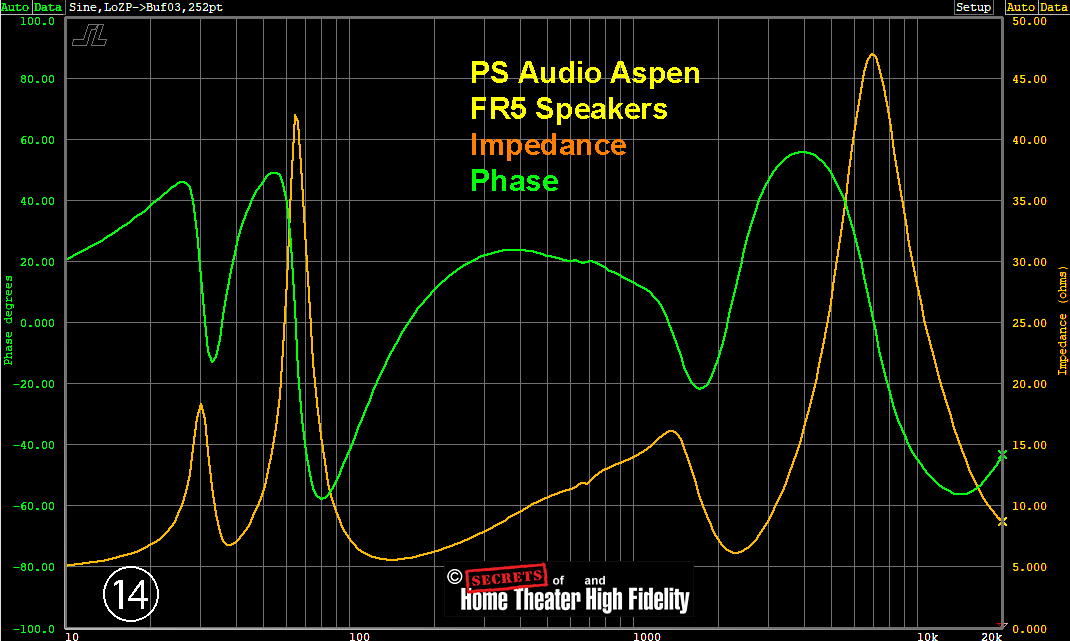They are truly beautiful. I obtained a pair of Aspen FR5 Stand-mount speakers for review.
As you can see in the photo above, a semi-gloss white finish is very modern-looking and certainly in fashion. The front panel is fiberglass resin. They can be purchased with matching white stands too.
They are available in black as well.
PS Audio Aspen FR5 Stand-mount Speakers Highlights
- Very modern, fashionable look
- Amazing bass output due to large passive radiator on the rear panel
- Planar-magnetic tweeter has predominantly 2nd-ordered harmonics
- Solid matching stands
One of the emerging trends in speaker design is the use of planar tweeters, including planar-magnetic, ribbon, and AMT (Air Motion Transfer). The PS Audio aspen FR5 speakers use a planar-magnetic. It is covered with a metal screen to protect it. The front baffle is fiberglass.
Design:
Two-way with Passive Radiator
Drivers:
One 2.5″ Planar-magnetic Tweeter
One 6.5″ Curv Polypropylene mid-woofer
One 6″ x 9″ Passive Radiator on the Rear Panel
Crossover:
Linkwitz-Riley 6th Order
Crossover Frequency:
1,750 Hz
Sensitivity:
83.5 dB
Nominal Impedance:
6.5 Ohms
Frequency Response:
35 Hz – 20 kHz, – 6 dB
Dimensions:
14.5″ H x 8″ W x 13″ D (Speaker)
28.25″ H x 11.75″ W x 14” D (Stand)
Weight:
26.6 Pounds (Speaker)
13.7 Pounds (Stand)
MSRP:
$3,495/pair (Speakers)
$499/pair (Stands)
Website:
Company:
SECRETS Tags:
PS Audio, Aspen, FR5, stand-mount, Speakers
The FR5’s are designed as audiophile-grade speakers. They are not entry-level either in construction or performance. The fiberglass front panel is bolted to the rear panel with long bolts extending all the way through the speakers.
The rear panel has a 6″ x 9″ passive radiator that loads the mid-woofer to lower the resonance frequency. This extends bass response down to 35 Hz. The low end roll-off of the frequency response of a speaker that has a passive radiator is actually steeper than a ported speaker, but it does not suffer from port resonances or standing-wave issues. The resonant frequency of a passive radiator is tuned to match the low-frequency response of the active woofer so that the passive radiator absorbs some of the energy of the woofer at its resonant frequency. Thus, the passive radiator dampens the active woofer driver, making for more controlled bass output.
The optional white stands are really nice ($499).
They come with spikes attached. Since I have hardwood floors, I removed them. This involves inserting an included small wrench into holes on the side of the spike and using the wrench to loosen the spike by turning it counterclockwise. Then you can unscrew the spike with your fingers.
Shown below is an exploded view of the FR5. The inside of the enclosure is open to both drivers, but there is a 4mm deep cup with damping material that seals the tweeter voice coil along with a foam gasket for the tweeter frame. There are several braces as well as long bolts that attach the front baffle to the rear panel. This pulls the enclosure very tightly together. Polyester fiber is used inside the enclosure for damping.
The box is tuned to 35 Hz. Passive radiator enclosures have a steeper roll-off below their tuning point than a typical ported enclosure because of the additional compliance term of the passive radiator. As such, there isn’t much output capability below the tuning frequency.
The binding posts are very heavy duty, another trend in modern speaker design. They can be bi-wired or bi-amped, but if you don’t want to do that, you just use the included wire jumper cables.
The photo below shows the jumper cables attached. You want to make sure the red cable connects the two red binding posts together, and the black cable connects the two black binding posts together.
I listened to the Aspen FR5’s using my PC with Qobuz streaming output to a Lynx E-22 balanced soundcard, PS Audio StellarGold Preamplifier, Balanced Audio Technology VK-500 Stereo Power Amplifier, and a Classé CA-5200 Power Amplifier.
These are my standard albums for review. I always listen to some of them for each product review.
I also listened to a number of new releases, such as the following:
Two of the most notable things about the sound of these speakers are the very nice planar-magnetic tweeter delivering a smooth, musical presentation, and the deep bass produced by the combination of the mid-woofer and passive radiator.
Here is a summary of my findings on the PS Audio Aspen FR5 Speakers:
1 – Plays loud without noticeable audible distortion – Yes
2 – Violins sound clean and natural – Yes, Anne Meyers’ ultra-high notes were spectacular in her album, Mirror in Mirror. Love that planar-magnetic tweeter!
3 – Sweet high-end rather than edgy, irritating sound – Yes, the planar-magnetic tweeter is a breath of clarity.
4 – Human voices natural – Yes, Tony Bennett sounded “S’Wonderful”. Good chorus quality too in Sacred Treasures of Venice.
5 – Detailed – Yes, lutes had just the right amount of edge “pluck”.
6 – Congestion at high volume – No. These speakers can play loud.
7 – Midrange prevalence – No
8 – Sibilance – Medium/High, but not harsh
9 – Powerful, punchy bass – Yes, very deep capability. Piano’s lowest notes were incredible.
10 – Bass boominess – No
I measured dB SPL using a laboratory-grade calibrated microphone (30 kHz) placed 1 meter from a point in between the tweeter and woofer, directly on-axis.
THD with a 50 Hz sine wave at 77 dB SPL was 1% (Figure 1). This is typical of small mid-woofers.
At 100 Hz, THD dropped to 0.74%, and the output was significantly higher at 82 dB SPL (I set the volume at 1 kHz to be 84 dB and left the volume control unchanged for the other bench tests).
Figure 3 shows 1 kHz, and THD is 0.14%, which is good.
At 5 kHz, the sound is coming from the tweeter, and the 2nd-ordered harmonic is the largest (Figure 4). This is the sort of result I am seeing with planar tweeters. It delivers a smoother and easier-to-listen-to sound. THD is 0.17%.
And, at 10 kHz (Figure 5), THD was 0.2%, with the 2nd-ordered harmonic, again, the largest.
Looking at the standard IMD (Intermodulation Distortion) test which uses 60 Hz and 7 kHz sine waves at a 4:1 ratio, IMD was 0.41% (Figure 6). The two test signals are coming from the woofer (60 Hz) and tweeter (7 kHz), so what I am looking for here is the interaction of the two signals as they travel to the listener’s ears. It will depend on the placement of the drivers in the enclosure. In this case, there will be interactive effects between the sound coming from the tweeter and the woofer, but also from the passive radiator.
Figure 7 shows the same data as in Figure 6, but with an expanded X scale. There are only 2 side peaks on either side of the 7 kHz signal peak. A good result.
In Figure 8, the results of 19 kHz and 20 kHz sine waves are shown. IMD was 0.15%.
Figure 9 shows the same data as in Figure 8 but with an expanded X scale. There are just 3 side peaks, and they are more than 60 dB SPL below the signal peaks, a very good result. I think planar tweeters are the future.
The results of a 1/10th decade test are shown in Figure 10. Most of the distortion is in the midrange, decreasing between 3 kHz and 10 kHz, then increasing again between 14 kHz and 25 kHz.
In Figure 11, Frequency Response and Distortion has been derived from an Impulse Response test. The midrange is attenuated somewhat compared to the >7 kHz mid and deep bass. The response is out to 30 kHz, with no ringing. The bass extends to 40 Hz and then attenuates. Notice that above 2 kHz, the distortion is primarily 2nd-ordered. This produces smooth sweet treble sound. It’s that planar-magnetic tweeter, crossing over at 1,750 Hz!
The Cumulative Spectral Decay is shown in Figure 12. Enclosure resonances are controlled. There are some driver resonances, as there always are to one degree or another.
The Step Response, below in Figure 13, indicates that the tweeter is wired in inverted phase, and as I have described in previous reviews, this is common with higher-order crossovers such as in the FR5 (sixth-order Linkwitz-Riley).
Impedance and Phase are shown in Figure 14. The impedance reaches a peak of 47 Ohms at 7 kHz and a nadir (lowest point) of 5 Ohms at 10 Hz. The Phase is +570 at 4 kHz and -580 at 80 kHz. I would rate these speakers more at 8 Ohms than 6.5 Ohms.
 “Wow, these speakers match my suit!”
“Wow, these speakers match my suit!”
PS Audio’s latest entry into the world of speakers, the Aspen Series, seems to be getting a good response from consumers. The aspen FR5 Stand-mount Speakers, support that response. With a passive radiator that extends the bass, and a planar magnetic tweeter that has primarily 2nd-ordered harmonics, the FR5’s should be very competitive at their price range in the market.
- Beautiful looks
- Solid construction
- Planar tweeter
- Can be bi-wired or bi-amped
- Choice of real wood veneer finish (oak/walnut/cherry)




